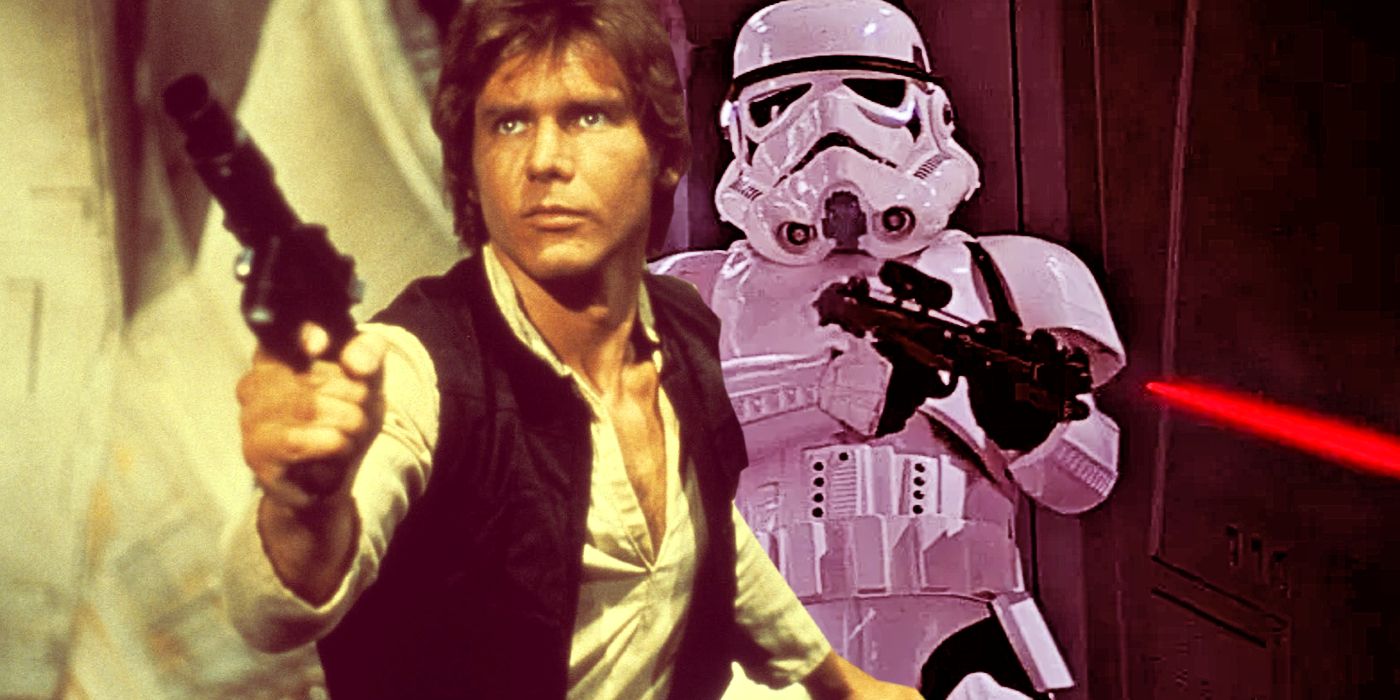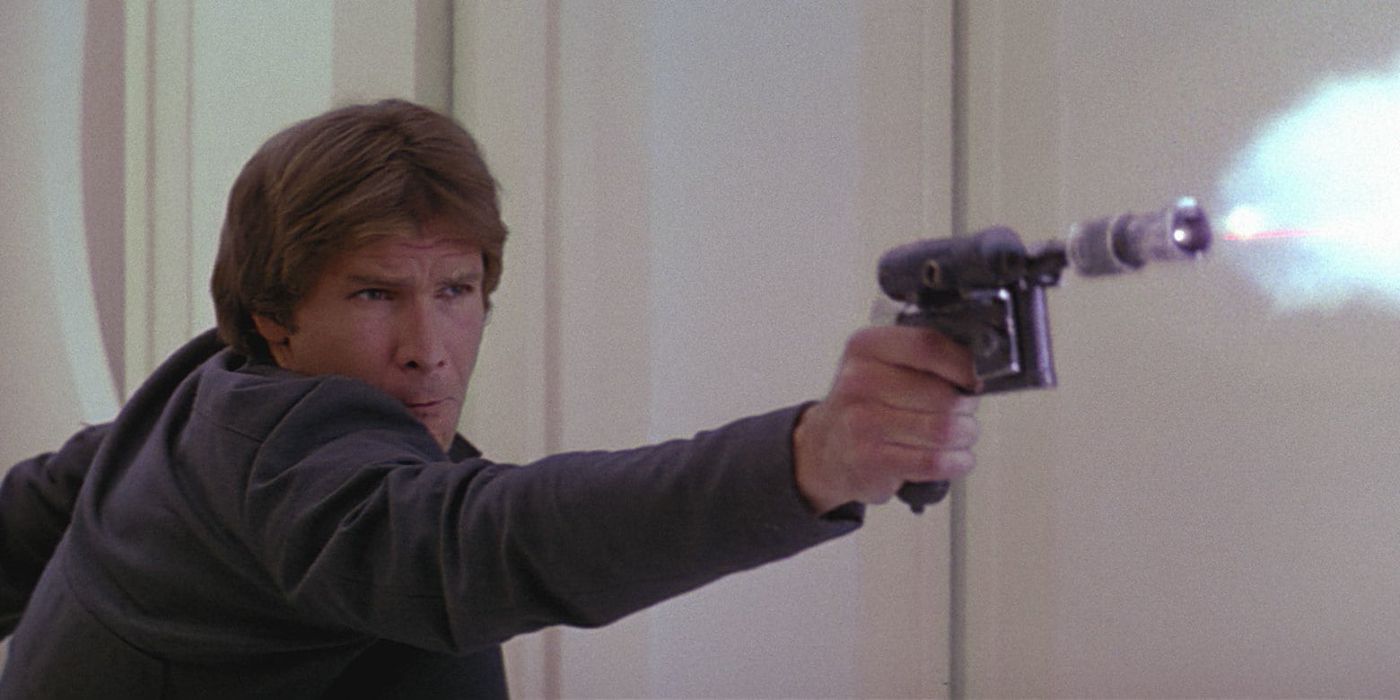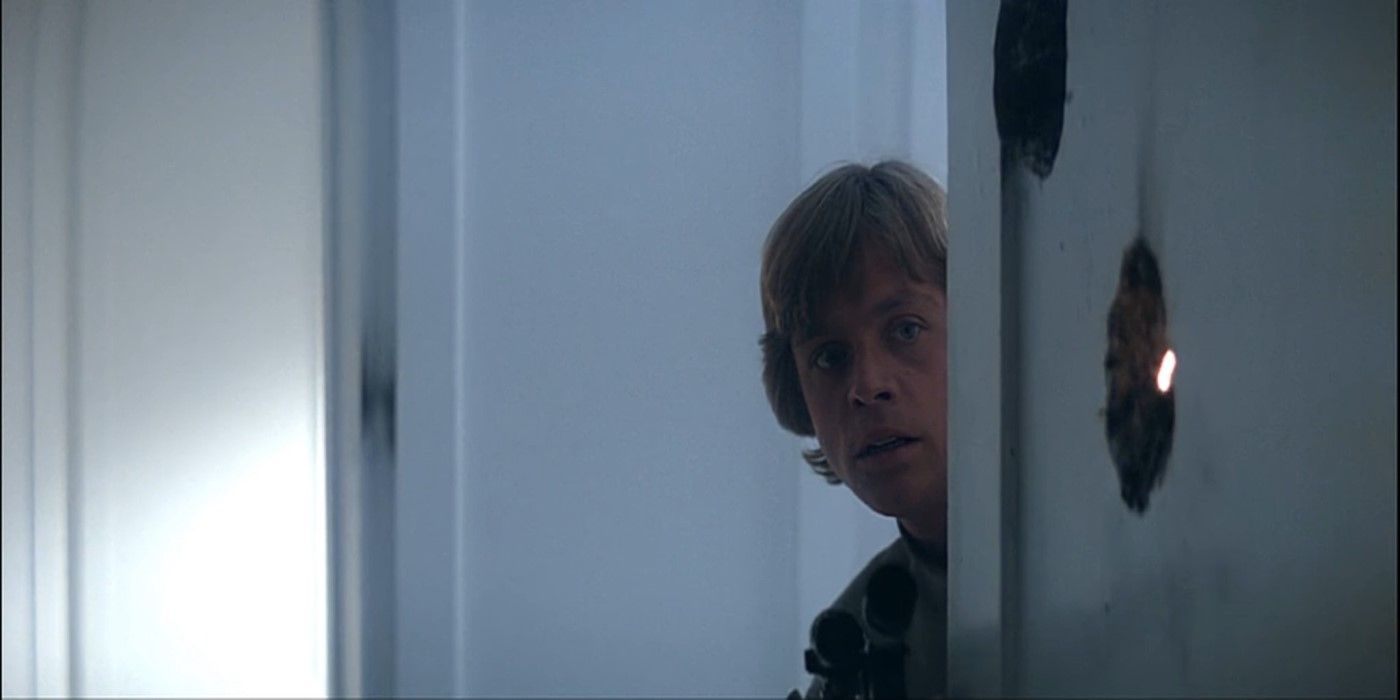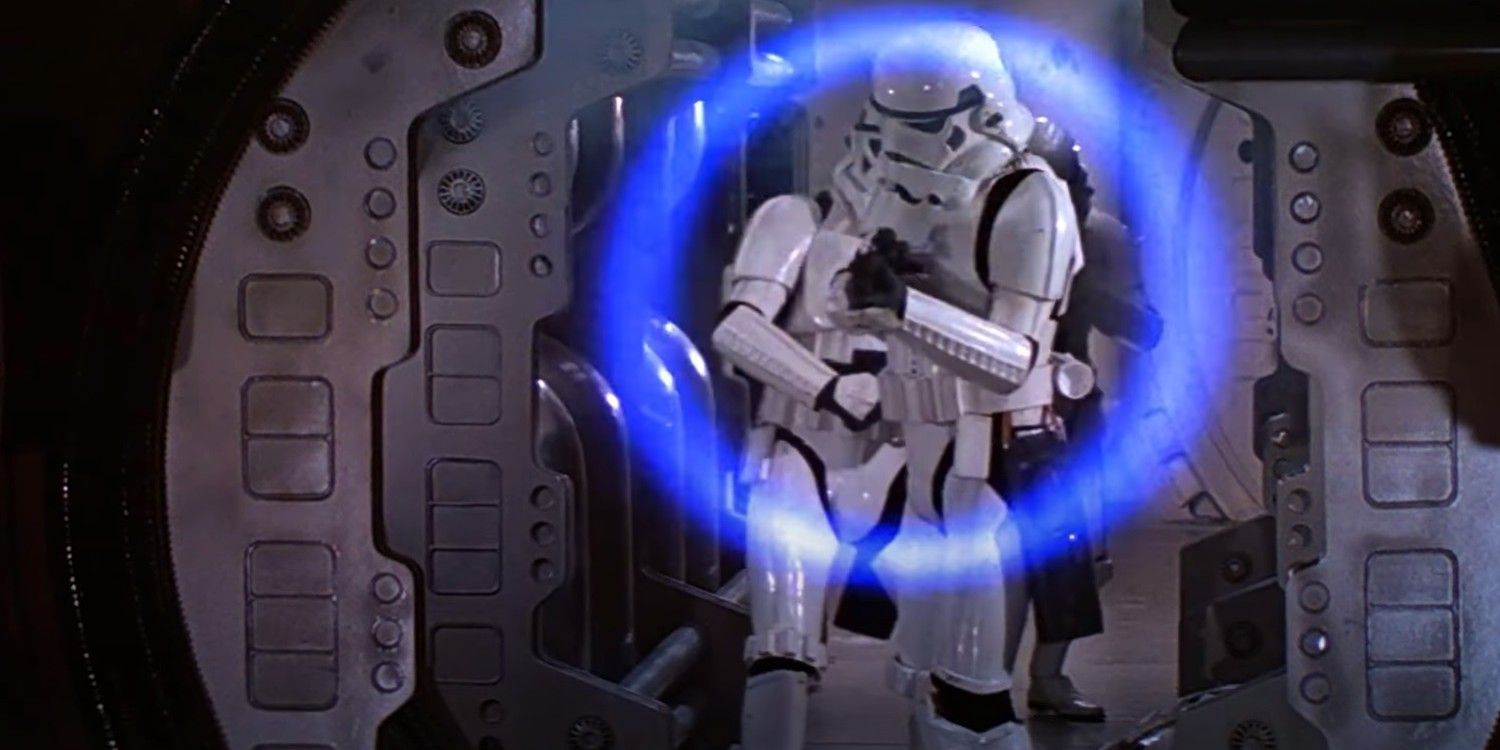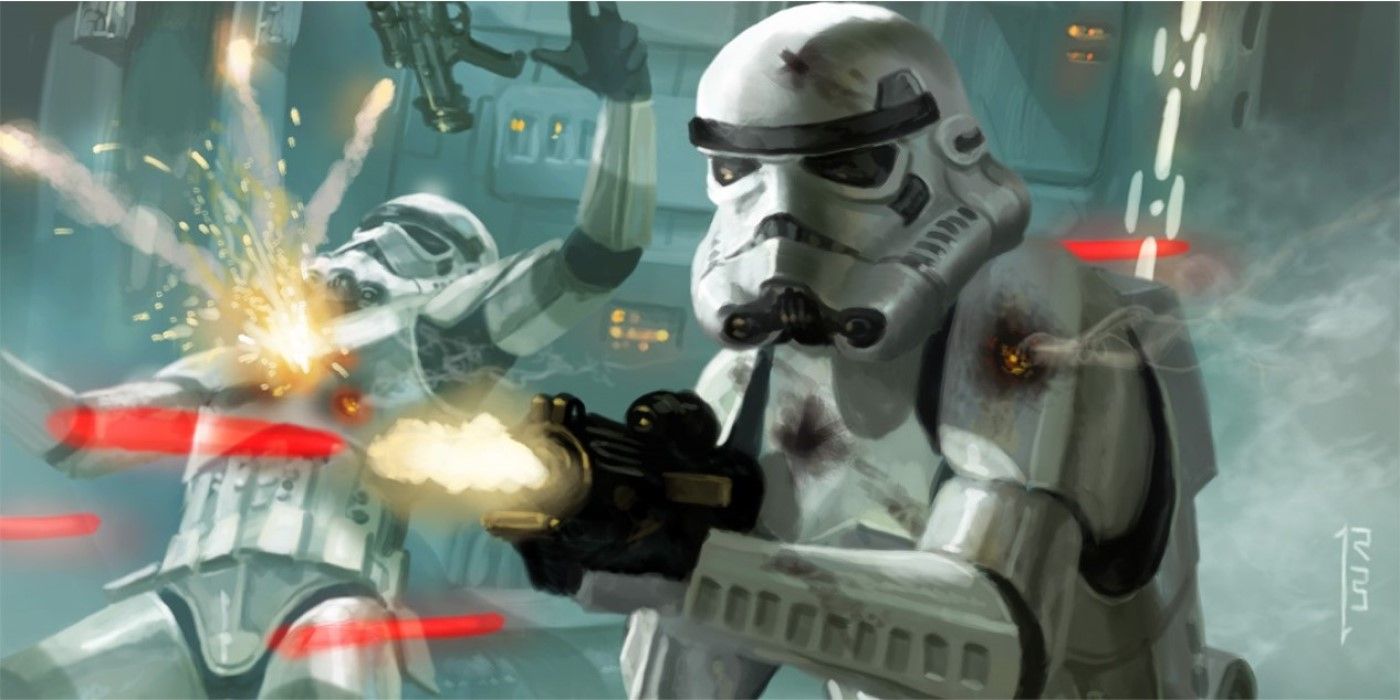Easily the most common weapon in the Star Wars franchise, blasters are used by every major faction in the Skywalker saga, and with a variety of modes, abilities, and power settings, they are far more intricate than simple “laser guns.” Energy weapons have been a staple of science fiction for almost as long as the genre itself existed. They’ve taken various forms, from “ray guns” to “death rays,” and they vary in complexity from franchise to franchise. The Star Wars franchise’s blasters are presented quite simply, but when observed more closely, it’s clear that they have a variety of settings, modes, and variants, not unlike the Star Trek franchise’s phasers.
Space vessel-mounted blaster cannons and military-grade blaster rifles and pistols were the first weapons seen in Star Wars. Since their debut in 1977, they’ve appeared in every live-action film and nearly all non-movie material from both canon and the original timeline, the Expanded Universe (aka Star Wars Legends). They’re ubiquitous in the Star Wars galaxy, used by simple farmers and elite military operatives alike. They’re seldom used by the mystical Jedi Knight and Sith Lords, however, who fight with their various Force abilities, and their signature lightsabers (which are themselves powered by Force-imbued crystals).
The Star Wars franchise also includes other ranged weapons, some quite similar to blasters. Made famous by the Rebel hero Chewbacca was the Wookiee Bowcaster, a crossbow-like weapon that fires explosive quarrels (metal projectiles encased in energy similar to blaster bolts). Other blaster-like weapons include Geonosian sonic weapons (which inflict catastrophic damage to humanoids) and ion blasters (used to temporarily incapacitate droids). One of the most gruesome weapons in both Star Wars timelines are disruptors, highly unstable and often illegal weapons that excruciatingly disintegrate humanoids. Disruptors were notoriously used by the bounty hunters Boba Fett and Din Djarin, the Imperial military, and various hitmen and enforcers of criminal syndicates. Though rare due to their primitive technology, slugthrowers (simple projectile weapons) were also used in the Star Wars franchise, notably by Tusken Raiders.
Star Wars Blasters: Overview
Though they fire what looks like laser beams, blasters are actually plasma weapons, firing pulses of explosive gas (such as Tibanna, which is mined in Lando Calrissian's Cloud City) that are irradiated by the blaster’s power pack. The pulses are called “blaster bolts,” and they explode upon contact with solids (the intensity of which is determined by the blaster’s power setting). While very few blasters use clips, most blasters are reloaded by replacing both the gas canister and power pack when they run out of ammunition. Most blasters have enough gas and battery power for hundreds of bolts, so they’re rarely seen being reloaded in the franchise.
Blaster bolts come in a variety of colors as well. Unlike lightsaber blades, whose colors usually signify the affiliation of their creators, blaster bolt colors are simply the result of the type of gas used in the blaster. Blaster bolts generally function the same, regardless of their color. Though highly destructive, blaster bolts could be deflected or absorbed through various means. Ray shields, like those seen aboard General Grievous’ flagship, the Invisible Hand, absorbed blaster bolts and were often used to protect vessels and, at times, military personnel, such as the Trade Federation’s Destroyer Droids. Magnetically sealed materials also caused blaster bolts to ricochet off of them. Lightsaber blades similarly deflected blaster bolts, leading Jedi and Sith alike to often send blaster bolts back at their attackers.
Star Wars Blasters: Power Settings
The most effective blasters had a variety of power settings. Outside of The Mandalorian, the Legends-era movie novelizations, and the Legends Marvel comics, blaster power settings are rarely mentioned directly, but throughout the franchise, they’re demonstrated rather than described. Lower power blaster bolts are the most commonly seen in the franchise. In almost all cases, a single, low-powered, blaster bolt hitting a droid or humanoid in the head or torso kills them instantly (depending on the blaster, this applies even to armored opponents). Low-powered bolts caused minor wounds when grazing or hitting limbs, but the damage was often easily remedied. When hitting metallic or stone materials, however, they did minimal damage, typically leaving scorch marks or shallow craters.
Higher settings were far more damaging, brutally melting or immolating organic materials. Obi-Wan Kenobi killed General Grievous by blasting him multiple times with the General’s own blaster. The higher-powered bolts set Grievous’ organs on fire, reducing him to a charred and gruesome corpse. Han Solo, when cornered by Greedo, evidently used a higher power setting when he killed the bounty hunter, as Greedo’s body was left smoking and audibly sizzling after Han blasted him (though who shot first is a matter of debate). High powered blasters had the same effect on inorganic materials as well. While disguised as Stormtroopers, Han Solo and Luke Skywalker blasted Imperial security cameras, causing small explosions that melted the devices. One of their blaster bolts exploded near an unarmored Imperial officer, killing the assailant.
The highest power settings were devastatingly destructive. On their highest settings, blaster bolts caused large explosions that vaporized materials and beings, at times killing them with the radius of their detonations. These settings were rarely used directly on organic humanoids, but Clone Troopers in the Legends-era Star Wars: Clone Wars animated series frequently used them on CIS Droids. The highest power settings were often used to either destroy obstacles or impede advancing enemies. In Star Wars, Stormtroopers blasted a large hole through an elevator door to reach the detention block aboard the Death Star. Minutes later, Princess Leia vaporizes a metallic grate, allowing her and her allies to enter a garbage chute. Earlier in the film, Han Solo sends a squad of Stormtroopers running for cover by firing full-power blasts at the walls of a Mos Eisley docking bay.
An example of the difference between power settings on the same material can be found in The Empire Strikes Back, where Stormtroopers slow Luke Skywalker’s advancement through Cloud City by blasting nearby walls, leaving massive craters in them. Later in the film, Stormtroopers fired at Chewbacca with the same blasters, leaving small burn marks in the same Cloud City walls. As shown in the Legends comics Jedi: Shaak Ti and Crimson Empire III—Empire Lost, blasters can be overloaded, eventually causing a massive explosion.
Star Wars Blasters: Firing Modes
While “kill” is the most commonly seen firing mode, blasters can also be used for non-lethal purposes, with the “stun” firing mode. Stun bolts appear as blue rings rather than laser bolts, and they incapacitate targets by overloading their nervous systems. Unlike lethal blaster bolts, stun bolts don’t appear to affect metallic or stone surfaces in any way. As shown in Star Wars: The Clone Wars, stun bolts don’t ricochet off of lightsaber blades either, they’re simply absorbed by them.
The same power settings used with lethal blaster bolts appear to be applicable to stun as well. Low power stun bolts paralyze victims or render them unconscious for only a few minutes, as shown in Star Wars and The Clone Wars. In both the canon 2008 Clone Wars TV series and the Legends-era Clone Wars video game, higher-powered stun bolts can render humanoids unconscious for hours. The highest stun settings, as shown in Star Wars: The Last Jedi, can blow a human across a room, potentially injuring them.
Another non-lethal mode was “sting,” which was the least harmful setting for blasters. Depending on its power setting, sting bolts could cause mild discomfort, intense pain, or paralysis of a body part or the entire body. Sting is used for training purposes, with Luke learning how to deflect blaster bolts with his lightsaber in Star Wars by training with a remote droid. Clone Trooper trainees fought simulated battles with blasters set for sting in The Clone Wars. Ezra Bridger trained in both blaster use and deflection by using sting bolts in Star Wars Rebels.
Star Wars Blasters: Armor-Piercing Ability
Body armor is commonly used by elite soldiers, with some of the most famous examples being Imperial and First Order Stormtroopers, Republic Clone Troopers, and Separatist Super Battle Droids. In addition to making these soldiers highly resistant to physical attacks, slugthrowers, and shrapnel, these armors protect against blaster bolts by dispersing their heat, leaving the soldiers incapacitated at worst and completely unimpeded at best. The majority of blasters, particularly civilian-grade blasters, had extreme difficulty penetrating body armors, but the standard military-grade blasters carried by the six main factions in the live-action films were armor-piercing. During the reign of the Galactic Empire, armor-piercing blasters were outlawed, so naturally, the Rebel Alliance’s troops used them exclusively, felling Stormtroopers with single, low-power, blaster bolts. The Imperials’ own weapons were armor-piercing as well, which proved useful to the Rebels when stealing Imperial blasters.
The difference between common and armor-piercing blasters was demonstrated in the Legends-era Dark Forces novellas, where, in Soldier for the Empire, Kyle Katarn infiltrates an Imperial base, equipped with his civilian-grade Bryar blaster pistol. While the unarmored Imperial officers and Navy Troopers are little threat to Katarn, he quickly confiscates an Imperial blaster before he runs into armored Stormtroopers. In the second book, Rebel Agent, Katarn fights a Stormtrooper and a gamorrean enforcer with his Bryar blaster. The enforcer was killed with a single blaster bolt while the Stormtrooper’s armor absorbed two direct hits before the third defeated the trooper. Mandalorian warriors wear the one type of armor in the Star Wars franchise that no blaster can damage. Made of the rare beskar metal, their armor is impervious to blasters and lightsaber blades, the latter indicating that beskar may have a connection to the Force.

